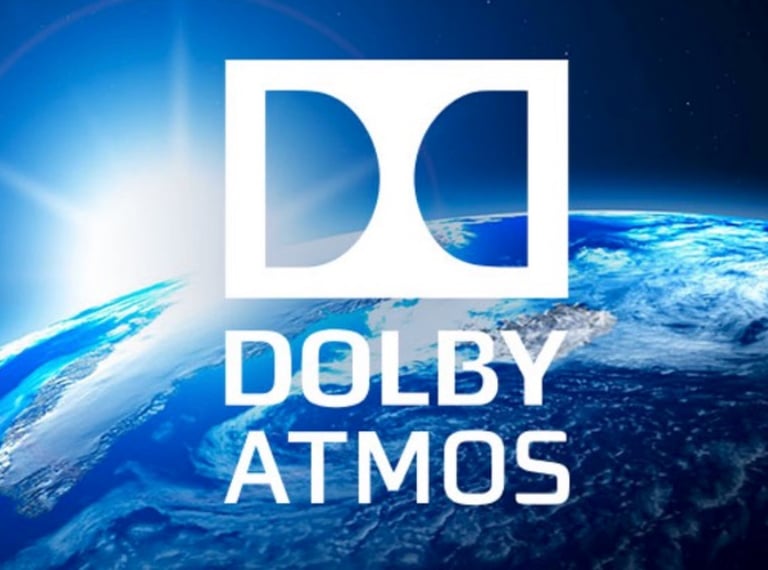I Work in Television—Why Should I Care About Dolby Atmos?
Update 5/2022
I just completed the online Calrec tutorial about Atmos and swear I know less now than before.
Their position seems to be: no objects in broadcast, all channel-based (which sounds suspiciously like exactly what we’re doing now).
In Calrec's world, Atmos adds a L-R and a Ls-Rs on a second 5.1 master out to create a 10 channel service. They say nothing in the tutorial about if and how those four channels find their way to the overhead speakers, you have to figure that out for yourself.
The tutorial is also silent on how to engage immersive elements. To my knowledge, the only parameter that can be adjusted other than panning is Near and Far, and that’s a two-position toggle. And I think you have to declare an object to use Near/Far. Which works with channel-based broadcast how?
So the whole thing seems to be, add four ceiling channels to your 5.1, pan appropriately, and send them on their way.


Original 6/2018
If you’re slugging it out in the trenches of television production audio, you know what Dolby Digital is, because all television sound has to become Dolby Digital before it finds its way to the home screen. But chances are, your only interactions with Dolby Atmos have been going to see a first-run big budget movie. And you probably thought, “having a zillion speakers is great, but has nothing to do with my world.”
That may change sooner than you think.
I can already see your eyes glazing over, so let’s cut all the associated mumbo-jumbo and consider three main points: what Dolby Atmos actually is, what it looks like in the home, and how it gets delivered.


The Two Main Things About Dolby Atmos
You know already know about stereo and 5.1 in television, right? Then you know that nearly all episodic drama is delivered as a discrete 5.1 mix, and nearly everything else is delivered stereo and then upmixed to 5.1 by the distributor. Atmos simply takes those “downstairs" channels and adds overhead speakers in pairs to them, taking advantage of the somewhat limited human capacity to localize sounds coming from above our heads. That’s Thing One. When you talk about a 5.1 system, you have six speakers: left, center, right, left surround, right surround, and subwoofer. The simplest discrete Atmos installation adds two overhead speakers (Dolby refers to them as top left and top right) so you get 5.1.2 (five main and surround, one subwoofer, two ceiling) configuration. For cinema, Atmos can support a lot of outputs, so a really large theater may have something like a 21.2.8 array (four pairs of speakers overhead), or larger.
A whole bunch of speakers.
Thing Two about Atmos is that it is object-based. Note that there are now two flavors of Atmos—a scaled-back version for home theater and gaming, and the cinema version you are probably familiar with. The cinema version can support up to 128 objects going to 64 separate speakers. So, what the heck is an object? Well, let’s step back a little. The default Atmos setup is 7.1.2, and is generated in Pro Tools. A mixer on a dub stage equipped with a default-sized array would use the 7.1.2 channel setup to create beds, ambiences, music, or anything else that doesn’t move between speakers. He would then use object tracks for everything else. A helicopter flyover that starts rear left, goes across the ceiling, and lands front right, would use a mono or stereo object track steered by an inserted Dolby Atmos panner plug-in to move through the appropriate speaker feeds. So the object doesn’t show up on the bed tracks—it has its own track, accompanied by metadata generated by the panner. Same thing with dialogue, swirling effects, and anything else that needs to move dynamically. Having dynamic sounds as objects means that whatever the theater size and array setup, the Dolby RMU (Rendering/Mixing Unit) in the theater can move things around accurately in real time to match the dictates of its own speaker configuration file regardless of what the setup was on the dub stage. Not that you need to know this, but the 7.1.2 counts against the total object number, so in the example above the mixer would actually have 118 object tracks to work with.
Dolby Atmos Monitor—part of the software suite used to create objects for Atmos cinema releases
And for broadcast you might think of objects in this way:
Second language
Commentary
Ambience beds
Music beds
If you mix these as objects and provide metadata on where they go, you open up a myriad of possibilities to the viewer, who may choose to do scandalous things like watch the game without listening to the commentators.
But I Mix For People in Their Living Rooms…
You could, right now, today, go out and buy a Dolby Atmos system for your home. After installing it, you could load a movie encoded with a Dolby TrueHD stream in your Blu-Ray player and enjoy a pretty startling immersive audio experience. If you upgrade your subscription to support Ultra HD you could watch Atmos titles right through your Netflix account. Today. Did I mention today? This isn’t the future we’re talking about. It’s here.
Now would be a GREAT time for you to get familiar with a little product called the Dolby Atmos Production Suite. It operates as a Pro Tools plug-in and provides the tools needed to originate Dolby Atmos mixes for the home. It’s $299.
Dolby Atmos Production Suite. Similar toolset to Dolby Atmos Monitor for home theater and gaming
And don’t grouse to me about people not setting up their home theater systems correctly. Your job is to make the most engaging, immersive mix possible, not to second-guess what gear the consumer has purchased and where he or she places it. As of 2016, 41% of American homes had some kind of home theater system, and that number is growing.
Dolby envisioned a scaled approach to home theater speaker systems, and licensed that technology to various manufacturers. The audio system can be as simple as a soundbar in front of the screen with up-firing drivers to bounce the top channels off the ceiling, to separate speakers at listener level (again with up-firing drivers), to fully discrete systems with speakers mounted on the ceiling.
Philips Fidelio Atmos soundbar
KEF R50 Dolby Atmos-enabled home speaker with up-firing element
Atmos for the home reduces bandwidth and file sizes by grouping objects together in what Dolby refers to as a spatially coded substream, which can be thought of as a lossy representation of the original object-based mix. For the truly crazy home cinema/gaming fan, Atmos can handle up to a 24.1.10 speaker array. Yes, that’s right—24 front and surround channels, a subwoofer, and 5 pairs of ceiling-mount speakers. Of course in the real world we’re much more apt to see 5.1.2 and 7.1.4 systems, but the point is much of the object-based mix has been retained and can be steered to the appropriate speakers on the fly.
Sounds Nice, But How Does it Get to the Viewer?
No less a player than Solid State Logic thinks immersive audio will gain acceptance in the home. SSL’s flagship broadcast audio platform, the System T, added support for 5.1.2, 5.1.4, 7.1.2, and 7.1.4 formats in their V2 software release. (They also added some other tasty toys you can read about here.)
SSL S300 Compact Audio Console, part of the System T lineup
But yeah, what about delivery? The current Dolby Digital AC-3 pipeline does not support Atmos. Things are changing, and I want you to consider the two following points carefully. First, we’re about to go through a revolution in picture quality. Sales of 4K television sets will probably pass 100 million this year, and consumers are already demanding sharper pictures and better color rendition than the current High Definition system allows. Netflix and Amazon are doing a limited delivery of HDR10+ content with its far superior color space. ATSC 3.0 with its superior picture capability is already rolling out in some markets, and that standard supports two audio delivery systems, MPEG-H and Dolby AC-4. The biggest difference between the two codecs is that the AC-4 stream is the most efficient compression algorithm Dolby has yet attained, and can scale itself from serving a big Atmos system to making a two-channel Atmos-like headphone experience. We will all be delivering for AC-4 at some point in the near future.
In the meantime, over-the-top providers like Netflix and Amazon don’t have to wait at all. They are already providing HDR content and can opt to deliver Atmos now on Dolby Digital Plus (the stopgap successor to AC-3) pathways.
Simply said, if you work in television audio you should pay attention to Dolby Atmos. It’s going to change the way we do things
4 June 2018
